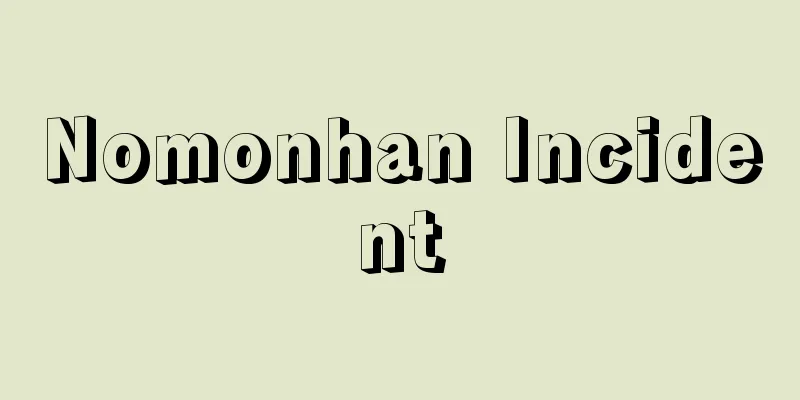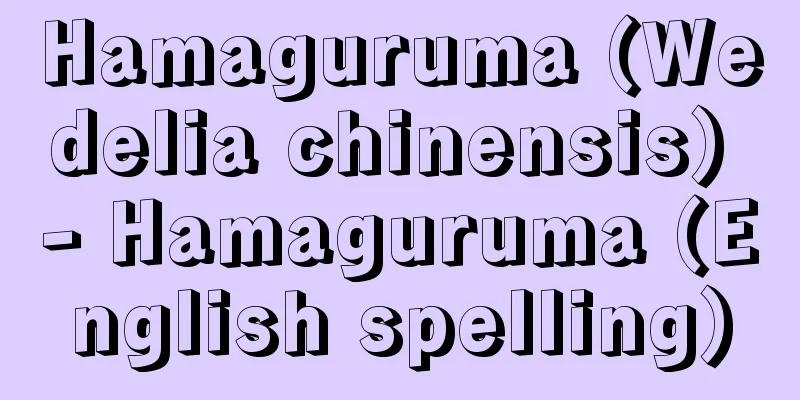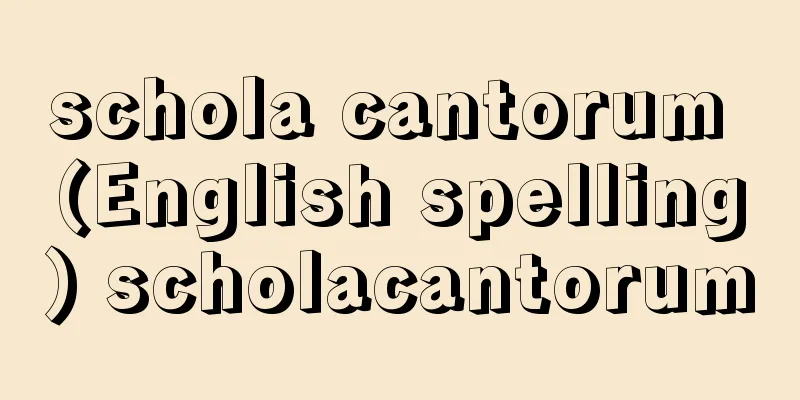Nomonhan Incident

|
A large-scale armed clash between the Japanese and Soviet armies occurred near Nomonhan, the border between Manchukuo and Mongolia (Outer Mongolia) in 1939 (Showa 14). The border around Nomonhan had long been disputed, with Japan claiming the Khalkha River and the Soviet side claiming the area around Nomonhan to the north. In April 1939 (Showa 14), the Kwantung Army issued the "Manchuria-Soviet Border Dispute Settlement Guidelines" to its subordinate troops, which stated that in the event of a conflict, Soviet forces should be thoroughly punished. On May 12, a clash occurred between the Outer Mongolian army and the Manchukuo army, which had crossed the Khalkha River near Nomonhan. Lieutenant General Komatsubara Michitaro, commander of the 23rd Division in Hailar, immediately dispatched his troops following an earlier instruction from the Kwantung Army, and temporarily repelled the Outer Mongolian army, but the Soviet army joined the Outer Mongolian army in a counterattack. Upon receiving the report, the Kwantung Army Headquarters decided on a drastic measure to defeat the Soviet forces, and on July 2nd, following the bombing of the rear bases in Outer Mongolia by air forces, the 23rd Division launched an attack. However, the Japanese forces were in a difficult position due to the Soviets' superior firepower and counterattacks by tanks. In the midst of the Second Sino-Japanese War, the Imperial General Headquarters, fearing that the incident would escalate further into a Japanese-Soviet war, decided on a policy of non-escalation, and the government also decided on a policy of peaceful resolution of the incident. However, the Kwantung Army ignored this and launched an offensive on July 23rd, and even after this failed, they continued to increase their forces and prepare for a third offensive. Meanwhile, in order to regain the border, the Soviets launched an all-out attack on August 20th, concentrating the large forces of their sniper and tank divisions, and the Japanese forces suffered a major defeat, destroying the 23rd Division. Just then, World War II broke out in Europe on September 1st, and Imperial General Headquarters issued strict orders to halt the attacks and withdraw troops. Negotiations were hurried to be concluded in Moscow, and a ceasefire agreement was signed on September 15th between Foreign Minister Molotov and Ambassador Togo Shigenori. The military headquarters took responsibility for the defeat and placed Kwantung Army Commander Ueda Kenkichi and Chief of Staff Isogai Rensuke in the reserves, but many unit commanders took responsibility and committed suicide among the participating units. This defeat dealt a major blow to the Army's plans to go to war with the Soviet Union. [Takashi Suzuki] "Defense Agency War History Office, ed. War History Series: Kwantung Army (1)" (1969, Asagumo Shimbunsha) Source: Shogakukan Encyclopedia Nipponica About Encyclopedia Nipponica Information | Legend |
|
1939年(昭和14)「満州国」とモンゴル(外蒙古(もうこ))の国境ノモンハン付近で起こった日ソ両軍の大規模な武力衝突。ノモンハン付近の国境について、日本側はハルハ河を、ソ連側は北方ノモンハン付近をそれぞれ国境と主張し、かねてより係争中であったが、関東軍は1939年(昭和14)4月隷下(れいか)部隊に示した「満ソ国境紛争処理要綱」において、紛争に際してはソ連軍を徹底的に膺懲(ようちょう)せよとの方針を決定した。たまたま5月12日に、ノモンハン付近でハルハ河を越えた外蒙軍と満州国軍が衝突する事件が起きた。ハイラルの第23師団長小松原道太郎中将は、関東軍の先の示達によりただちに部隊を出動させ外蒙軍を一時撃退したが、ソ連軍は外蒙軍に加わって反撃した。報告を受けた関東軍司令部はソ連軍撃破の強硬策を決定し、航空部隊による外蒙の後方基地爆撃に続いて、7月2日第23師団が攻撃を開始した。しかし日本軍はソ連軍の優勢な火力と戦車の反撃を受けて苦戦に陥った。日中戦争の最中にあって、事件がさらに日ソ戦争に拡大することを恐れた大本営は不拡大方針を決め、政府も事件の平和的解決の方針を定めた。しかしこれを無視した関東軍は7月23日、攻勢を行い、これに失敗後もなお兵力の増強を図り、第三次攻勢を準備した。一方、ソ連軍は国境線回復のため8月20日から狙撃(そげき)・戦車両師団の大兵力を集中した総攻撃を開始し、日本軍は第23師団壊滅の大敗を喫した。おりから9月1日ヨーロッパで第二次世界大戦が勃発(ぼっぱつ)したため、大本営は攻撃の中止と兵力の後退を厳命し、モスクワにおける交渉妥結を急ぎ、9月15日モロトフ外相と東郷茂徳(しげのり)大使の間に停戦協定が調印された。軍中央は敗戦の責任により関東軍の植田謙吉(けんきち)司令官と磯谷廉介(いそがいれんすけ)参謀長を予備役に編入したが、参加部隊では責任をとって自決する部隊長が相次いだ。事件の敗北は、陸軍の対ソ開戦の企図に重大な打撃を与えた。 [鈴木隆史] 『防衛庁戦史室編『戦史叢書・関東軍(1)』(1969・朝雲新聞社)』 出典 小学館 日本大百科全書(ニッポニカ)日本大百科全書(ニッポニカ)について 情報 | 凡例 |
<<: Noyan (English spelling)〈Mongolia〉noyan
Recommend
Morley, M.
…It was produced mainly in the United States and ...
Daemonorops
…any of several tropical climbing palms, includin...
Tanba Yosaku Matsuyo no Komuro Bushi - Tanba Yosaku Matsuyo no Komuro Bushi
Joruri, domestic drama. Three acts. Written by Chi...
Recital - Risaitar (English spelling) recital
Solo concert, solo performance. The word originat...
Cui Shi; Ts`ui Shih
A Chinese official of the Later Han Dynasty. Born ...
Eleven-faced Kannon (English name)
One of the Six Kannon Bodhisattvas who teach the S...
Dogmatism - dogmatism
Etymologically, it comes from dogma, which refers...
Uganda Giraffe - Uganda Giraffe
…Most of the body weight is on the front legs. Th...
Rice exchange - beikokutorihikijo (English spelling)
An exchange for trading rice futures. Its purpose...
Noskowski, Z. (English spelling) NoskowskiZ
...We cannot ignore the famous violinist Karol Jó...
Aizu Yaichi
Poet, calligrapher, and art historian. Born on Au...
Fistularia villosa (English name) Fistulariavillosa
…[Isao Hanyu]. … *Some of the terminology that me...
《New Family》 - Arajyotai
…Although he gained some public acclaim for his s...
Büsching, AF (English spelling) BuschingAF
...In the 18th century (link), geography was defi...
Salivary gland chromosome
A giant chromosome found in the resting nucleus of...









